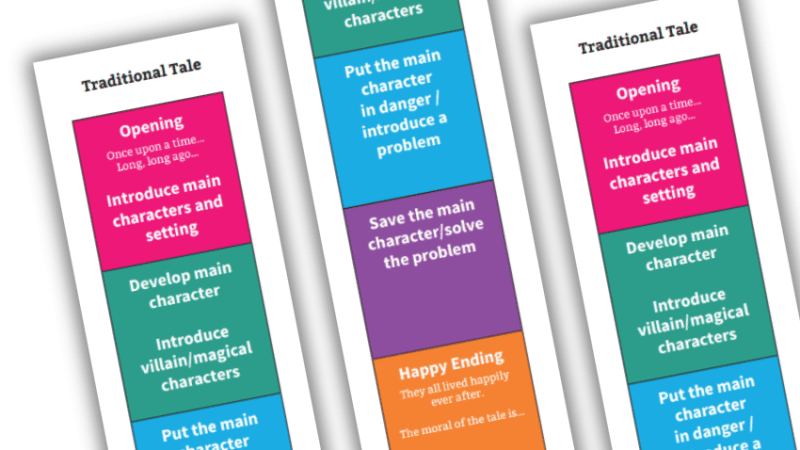Children’s screen time – How much is too much?

Kids are all addicted to phones and tablets and it’s frying their brains, right? Actually, research suggests something different entirely…

In our book TechnoTeaching: Taking Practice to The Next Level in a Digital World, Dr Julie M Wood and I wanted to guide educators to integrate technology into their practice. Based on our joint experience, we asked the reader to consider three elements – skills/tools, content and mindset.
In my experience, the majority of teachers are concerned with the first two – which apps/devices to use, how to be trained in their use and where to implement this into a lesson.
But I would argue it is the latter, mindset, that is actually the key to integrating technology in the classroom. Mindset helps manage how much technology we use in teaching, and in turn can make the virtual world a safe place for our students.
So, how do we create a positive mindset when it comes to the internet? After all the web supposedly wasn’t designed for children. I believe the first thing is to look at how we interact with technology. Let’s take screen use as an example.
Children’s screen time
When it comes to children’s screen time, views seem to be polarised. While parents feel guilty for allowing their children ‘too much’, educators seek to use more screen time in the classroom, all while policy makers are starting to understand what the implications on mental health and wellbeing are.
So how much is too much and is it really an issue?
The CommonSenseMedia research piece, Technology Addiction: Concern, Controversy and Finding Balance reported the pros and the cons based on surveys from 1,200 people – parents and teens. The comparison of how children and their parents felt about screen use and addiction illustrated some interesting mindsets.
Made no difference
You might be expecting awful statistics about 100% of children being bullied online and parents revealing their young children are glued to screens all night long.
But actually the research and data illustrated that mobile devices “have made no difference to, or even helped” parent-child relationships.
In fact, only “a significant minority of families seems to be truly struggling to integrate mobile technology in a healthy way”. Shocking, right?
The report instead suggests that other factors, such as depression or anxiety, result in prolonged screen time, which then causes things like social withdrawal and a lack of concentration.
If we change the focus and look at how adults use screens (how often we check our phones for escapism, for example), it is here that we see the detrimental impact on our children.
For example, in a survey of 8-13 year olds and their parents, 54 percent of children felt that their parents checked their devices too often, and 32 percent of children felt unimportant when their parents were distracted by their phones.
This grey area shows us that screen time itself might not be the actual problem, it’s more how we use it. And yes, in some cases, thanks to causes like unhealthy family relationships, busy parents, mental health and wellbeing issues, screen use is neither healthy or productive, when it could be both.
Better connected
What also interested me was that the research showed how the generation gap between parents and teens led to different behaviours, but similar goals – ultimately many were using their devices to communicate with friends and family.
This challenges the idea of “screen addiction” as something that is actually a natural adaptation to rapidly and constantly evolving social norms.
One of the big issues of online behaviour, cyber-bullying (including sexting), is widely associated with students, but is just as clear on more-adult apps like Twitter.
Responsible use can therefore be questioned on either side although, arguably, more adults are aware of the consequences and repercussions of their online actions, which means a smaller percentage of bullying occurs.
With teens batting their emotions, dealing with peer pressure and not always understanding what they are always doing, this means that irresponsible behaviour online often needs more unpacking in terms of motive and involvement.
7 ways to ensure children’s screen time is healthy and productive
This screen use report from Oxford University looked into exactly how much screen time is beneficial. Of the 120,000 15 year olds asked, 99.9% reported using digital technology/having screen time daily.
The paper concluded that more than ‘moderate’ time can be linked with a negative effect on wellbeing, but they estimated this is a ‘small’ effect at 1% or less – equivalent to one-third of the positive effect on wellbeing of a good night’s sleep, or regularly eating breakfast.
They also proposed the ‘Goldilocks’ theory – that there is a middle ground between too much and too little. The lead authors, Dr Andrew Przybylski, of the Oxford Internet Institute at the University of Oxford and Dr Netta Weinstein of Cardiff University, state how screen time is now central to modern daily life and that being interconnected has many benefits.
So, can we keep screen-time Goldilocks in check? Yes! By questioning if the usage is healthy, responsible and/or productive. And here are some ways to do this:
1 | Codes
Create a school/classroom/family screen agreement including what children are doing (active/passive use), how much time they spend on it over a day and if it is age/cognitively appropriate.
Consider what is moderate use and how they can be productive whilst on a screen.
2 | Time
‘Screen-free times’ during the day can help at home. Good times would be around meals and at least an hour before bedtime. No screen use until the morning.
For schools we would suggest you consider how much of the teaching day for students is based around screens (smart boards, tablets etc).
As well as supporting parents in eSafety, schools could extend this to open up a dialogue around children’s screen time and the importance of sleep. Early Support produces supportive guides for parents which can help with sleep (see page 24 regarding children’s screen time), and the OU report referred to above suggests the following guidelines:
Weekdays
- Video-game play: 1 hour 40 minutes
- Smartphone use: 1 hour 57 minutes
- Watching films: 3 hours 41 minutes
- Using computers: 4 hours 17 minutes
Weekends
- Moderately more is ‘allowed’
3 | Age/stage appropriate
In schools we use age-appropriate films (by law), but we often do not consider the qualities of those movies (and I say this as an ex-Media AST).
Common Sense Media reviews films, video games and apps for subjects and ages, but also skills like ‘teamwork’ and ‘self-reflection’. This means you can boost a number of skills and qualities with your classes as you ‘edutain’ them.
4 | ScreenTalk
Ask your young people to discuss their screen use. They need to distance themselves so they can reflect. Discuss being an active user rather than a passive audience.
5 | Multitasking
The CSM research illustrated that “heavy media multi-taskers have a harder time filtering out irrelevant information (Ophir, Nass, & Wagner, 2009), but it is possible that they have other attention issues that result in poor performance.”
Although more research is needed in this area, attention and concentration issues often result in poor classroom behaviour, mainly as the children struggle to feel engaged in lessons. Teaching students this, and how to multitask is an area for reflection that will help them in the future.
6 | Ask the expert
If you are not sure, ask someone who knows – and encourage your families and students too. Look at the research, ask edtech experts and paediatricians. Ask questions and find out the answers!
7 | Be a role model
Basically, you (yes, you!) also need to be considering the above. In your role as an educator, as a parent and as a user of screens.
In conclusion, we need to update our sense of online safety and look more about how we use technology. It’s here to stay, so we need a longer-term plan for a happy ending.
We need to get away from being shocked at how many times an image is reposted, or how many countries can ‘see’ something online.
We need to now look beyond the devices, apps and content of the internet and look more to how we approach it. We need a new mindset, at school and at home, so we get it juuuusssst right.
Nicole Ponsford is an educational writer, editor, speaker and coach. She is the the co-author of TechnoTeaching: Taking Practice to The Next Level in the Digital Age, and co-founder of TechnoTeachers. Follow her on Twitter at @nicoleponsford. Browse resources for Safer Internet Day.











